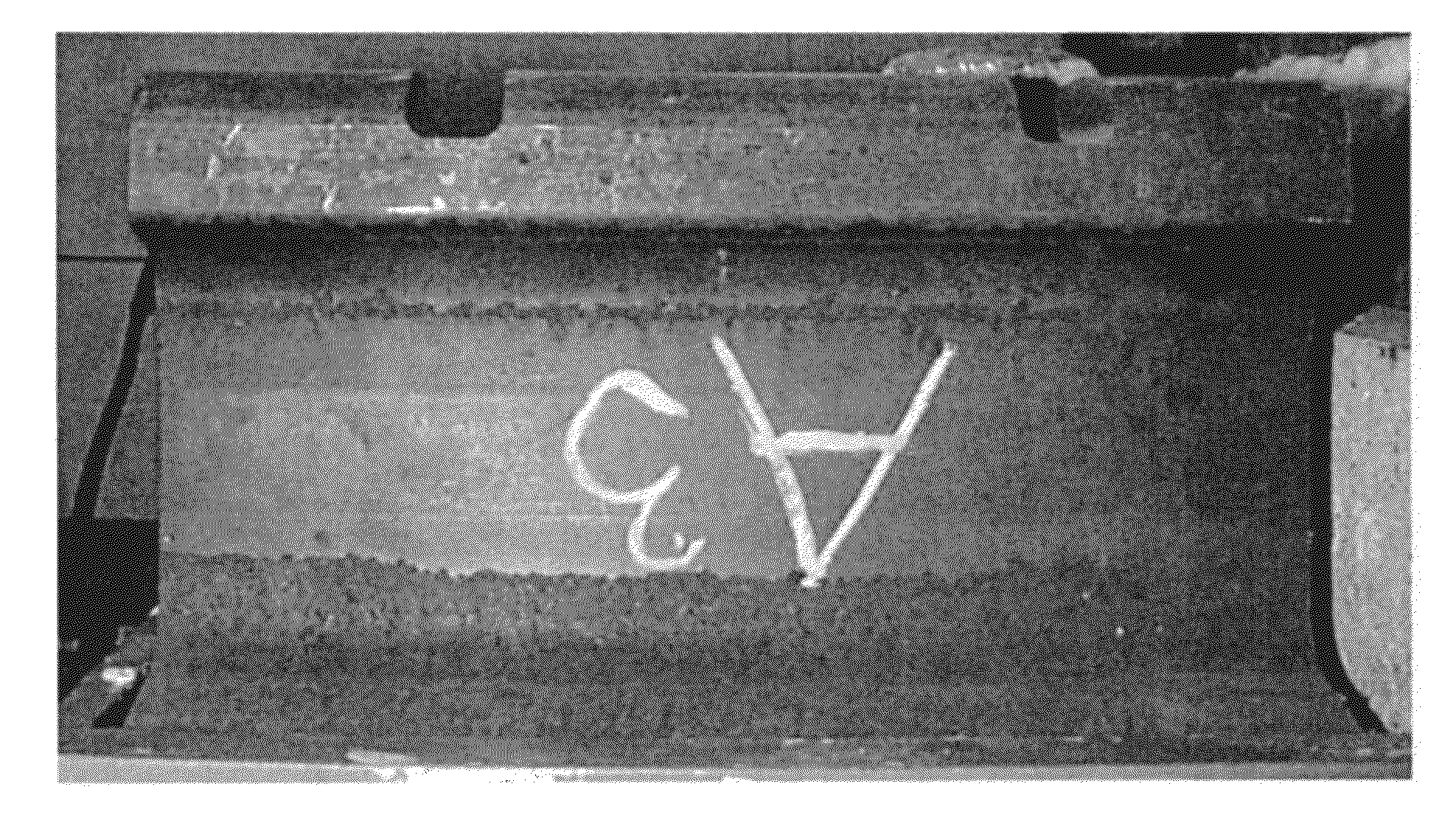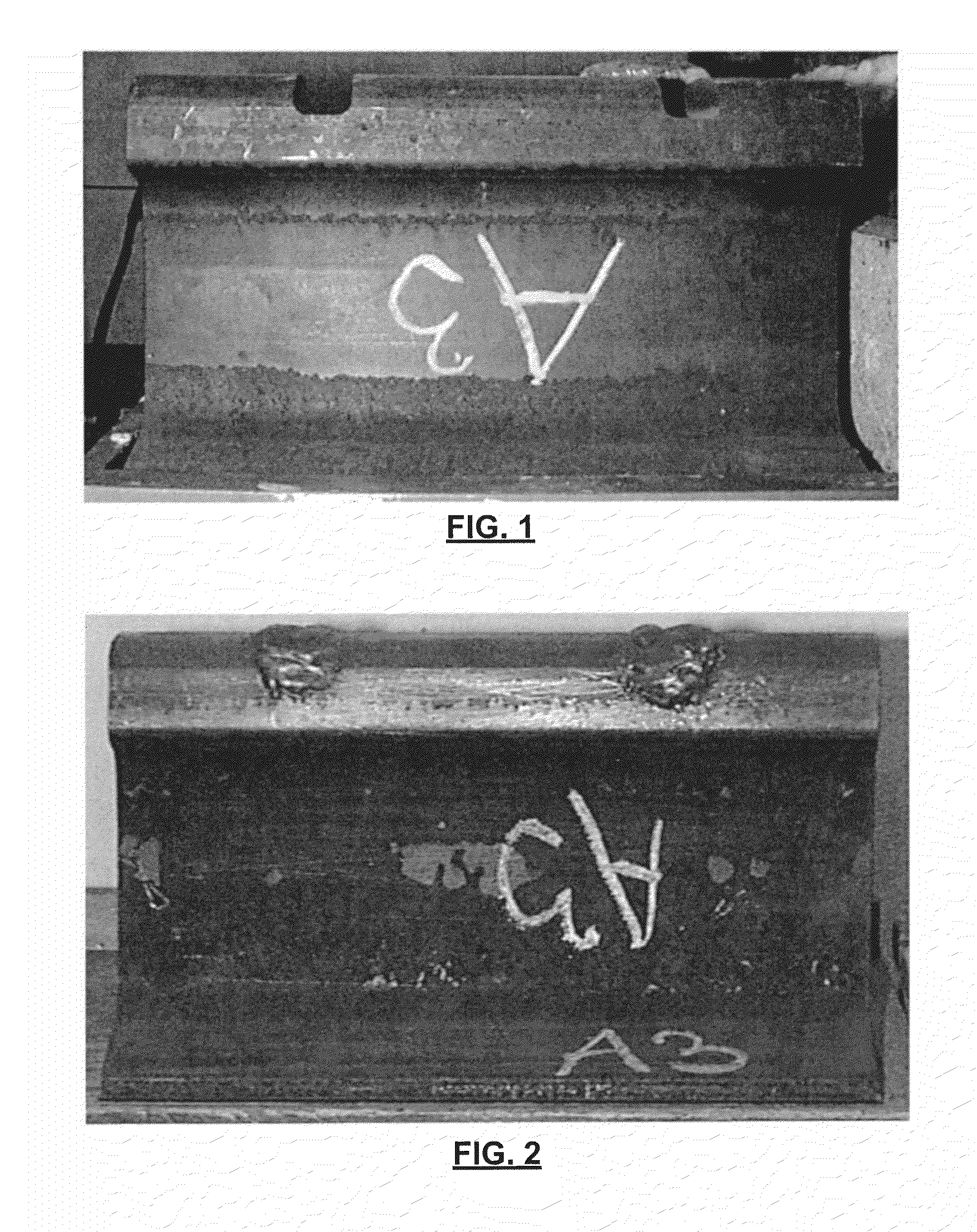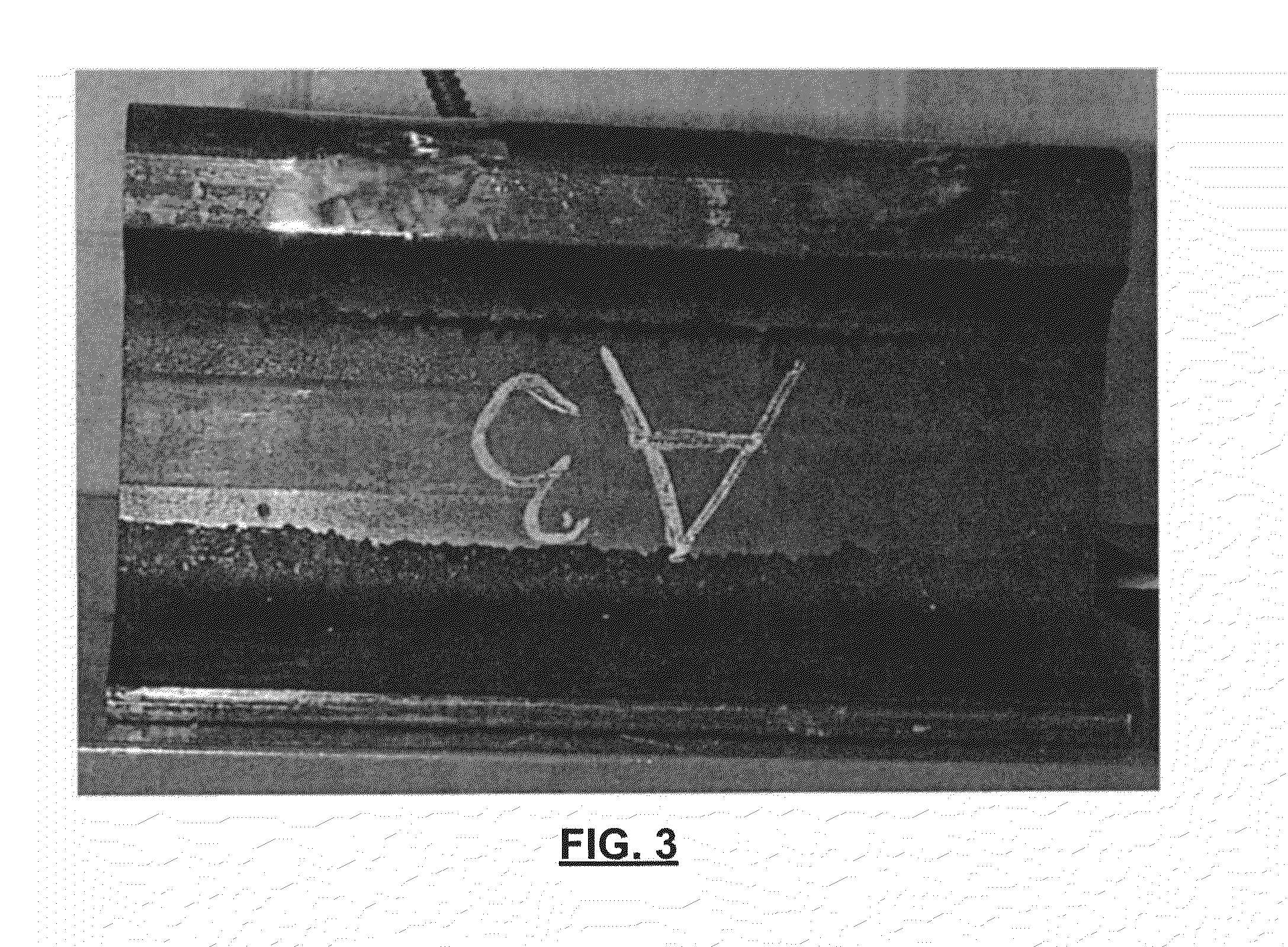Railroad rail head repair
a rail head and rail head technology, applied in the direction of manufacturing tools, soldering equipment, ways, etc., can solve the problems of bainitic rail steel not being as tough as ams, unable to endure large cracks, and prone to hydrogen cracks, etc., to avoid ductile fracture characteristics, improve flexural residual strength, and reduce the effect of bending
Active Publication Date: 2014-06-19
TUSKEGEE UNIVERSITY
View PDF3 Cites 5 Cited by
- Summary
- Abstract
- Description
- Claims
- Application Information
AI Technical Summary
Benefits of technology
[0032]Further, embodiments of the invention also include a method for repairing railhead defects comprising (1) uniformly preheating the area to be repaired; (2) selecting a welding material having physical properties closely correlating with those of the steel rail; (3) using multi-pass gas metal arc welding (“GMAW”) at a heat input that is sufficiently high to avoid ductile fracture characteristics and sufficiently low to avoid brittle fracture characteristics and with controlled heating and cooling rates; (4) wherein the repaired railhead has improved resistance to material separatio
Problems solved by technology
However, if it is cooled too slowly, carbide precipitation will occur at the grain boundaries and cause severe embrittlement.
This hardness increases the wear resistance of rail steels, but it also means that rail formed from such bainitic steels are more vulnerable to hydrogen cracking.
The bainitic rail steel is not as tough as AMS and is not able to endure the large cracks that AMS can tolerate.
Bainitic steels, however, are also relatively more costly.
Fatigue failure of steel rail parts is the main cause of derailments and other severe railroad accidents.
Studies have shown that rail welds are generally are more prone to defects than the parent rail and hence failure, because they are usually weaker than the rails they join (see, for example, Skyttebol et al., Eng.
These defects may be small but are locations where fatigue cracks may initiate, propagate and lead to rail failure.
In most cases, an increase in the strength of steels decreases their toughness.
An increase in the cooling rate of a work piece will provide higher hardness values, but a cooling rate that is too fast may cause the base material to crack, especially in high carbon st
Method used
the structure of the environmentally friendly knitted fabric provided by the present invention; figure 2 Flow chart of the yarn wrapping machine for environmentally friendly knitted fabrics and storage devices; image 3 Is the parameter map of the yarn covering machine
View moreImage
Smart Image Click on the blue labels to locate them in the text.
Smart ImageViewing Examples
Examples
Experimental program
Comparison scheme
Effect test
 Login to View More
Login to View More PUM
| Property | Measurement | Unit |
|---|---|---|
| Temperature | aaaaa | aaaaa |
| Temperature | aaaaa | aaaaa |
| Temperature | aaaaa | aaaaa |
Login to View More
Abstract
A multi-pass gas metal arc weld (“GMAW”) approach is used for in-situ repair of railhead defects. A defect is removed via machining a perpendicular slot or grove in the railhead leaving the web and base unaltered. A sufficient number of GMAW passes are used to fill the slot using a weld material suitable for the particular type of parent steel, and excess weldment can be removed. Optionally, for pearlitic steel rails post-weld heat treatment can be used to cause austenization and/or quenching of the weld. The weld heat inputs and other parameters are controlled to avoid ductile and brittle fracture related morphologies.
Description
STATEMENT REGARDING FEDERALLY SPONSORED RESEARCH OR DEVELOPMENT[0001]This invention was made with government support under grant award number DTFR53-02-G-00021 awarded by the U.S. Department of Transportation and Federal Railroad Administration. The government has certain rights in the invention.FIELD OF THE INVENTION[0002]The present invention relates to the repair of rail heads having defects therein. More particularly, the present invention relates to methods for in-situ repair of defects in rail heads, and repaired rails formed there from.BACKGROUND OF THE INVENTION[0003]Carbon-manganese steels are usually used for railroad track applications. The strength and toughness of steels used for forming such rails are controlled by alloying additions. In particular, high strength is achieved by additions of carbon, manganese, nickel and chromium, with carbon having the biggest effect. Adding nickel will also promote toughness, while decreasing sulfur and phosphorus content of the steel...
Claims
the structure of the environmentally friendly knitted fabric provided by the present invention; figure 2 Flow chart of the yarn wrapping machine for environmentally friendly knitted fabrics and storage devices; image 3 Is the parameter map of the yarn covering machine
Login to View More Application Information
Patent Timeline
 Login to View More
Login to View More IPC IPC(8): B23K9/18E01B5/02
CPCE01B5/02B23K9/18B23K9/173B23K9/23B23K2101/26E01B31/18
Inventor AGLAN, HESHMAT
Owner TUSKEGEE UNIVERSITY
Features
- R&D
- Intellectual Property
- Life Sciences
- Materials
- Tech Scout
Why Patsnap Eureka
- Unparalleled Data Quality
- Higher Quality Content
- 60% Fewer Hallucinations
Social media
Patsnap Eureka Blog
Learn More Browse by: Latest US Patents, China's latest patents, Technical Efficacy Thesaurus, Application Domain, Technology Topic, Popular Technical Reports.
© 2025 PatSnap. All rights reserved.Legal|Privacy policy|Modern Slavery Act Transparency Statement|Sitemap|About US| Contact US: help@patsnap.com



